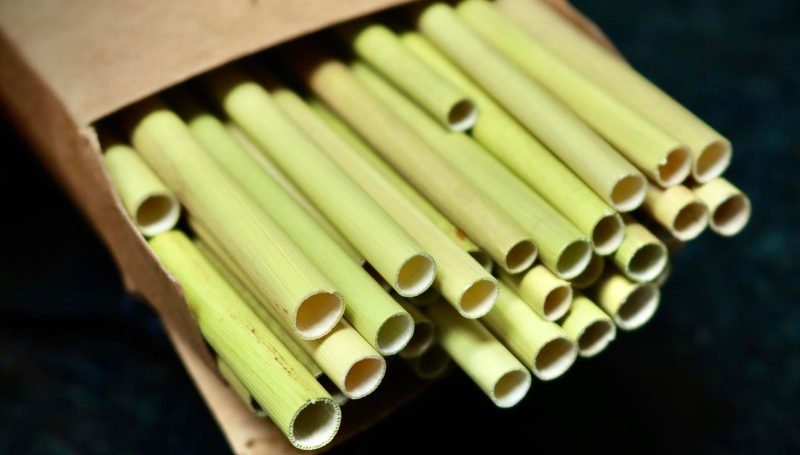Found in tropical regions worldwide, Lepironia articulata, commonly known as grass, is a species belonging to the Articulata genus within the Lepironia Sedge family. Standing at a maximum height of 1.5 meters, this grass boasts a sturdy outer layer measuring around 8 mm in width, with horizontal ribs housing 3-4 sheaths.
Thriving near water sources, these grasses have emerged as a perfect alternative to plastic straws. Made entirely of organic and natural materials, they hold the potential to combat the plastic pollution plaguing our planet.
The Simple Process of Crafting Natural Green Grass Straws
Producing these eco-friendly straws is a straightforward and uncomplicated process. With no need for large-scale industrial setups or complex machinery, anyone can transform natural grass into functional straws by following a few simple steps. Let’s explore the eight-step production process:
Step 1: Selecting the Right Grass
The initial phase involves carefully choosing the ideal grass for straw production. Optimal straw quality requires selecting strong and rigid stems with tube diameters ranging from 5 to 8 mm. Ensuring the absence of fungus or burn marks is essential. The meticulous selection of raw materials sets the foundation for flawless production.
Step 2: Cleaning the Collected Grass
Once the raw materials are gathered, they are sent to the factory for further processing, starting with a thorough cleansing. The grass undergoes cleaning and sterilization using saline, ozone, or water disinfection methods. Removing the sheaths from the base and adhesive grass eagles is vital to eliminate microorganisms and small aquatic plants that may be present on the outer surface. Careful and meticulous washing ensures optimal hygiene.
Step 3: Cutting the Grass
During this step, the cleaned grass from the previous stage is fed into a cutting system, where it is precisely shaped into standard straw formats. The cutting process must be carried out meticulously to minimize pipe cracking, as cracked straws are unsuitable for use. Ensuring the integrity of the pipes significantly impacts production efficiency.
Step 4: Freshening the Grass
Following the cutting process, workers carefully guide the perfectly shaped materials through the gut inside. Iron rods or pipes are employed to clean the inner part of the straws, forming flawless hollow tube intestines. This stage requires meticulous attention to detail, ensuring the production of fresh and pristine straws. The freshly prepared products are then set aside for a brief period in preparation for the next steps.
Step 5: Water Wash
The products from the previous step undergo a thorough washing in a sterile water system. This critical washing phase eliminates impurities, waste, unnecessary compounds, and, most importantly, microorganisms. Certain impurities pose significant health risks, potentially causing immediate and severe diseases such as diarrhea, cholera, and food poisoning. Thus, this step holds paramount importance in the production process.
Step 6: Drying the Product
To achieve complete removal of limited surface disinfection caused by yeasts and molds, the freshly washed products are subjected to drying. A large-capacity indoor drying system is typically utilized, although sun drying under direct sunlight for two to three days can also be employed. However, for optimal results and safety, indoor drying with temperature control between 50 to 80 degrees Celsius is recommended. This step naturally extends the shelf life of the heat-treated product.
Step 7: Packaging
With the products nearly ready for use, adherence to production standards becomes crucial during packaging. Prior to packaging, a manual inspection is carried out to eliminate any defective items. The perfect products are then classified and packaged, ensuring proper protection to prevent contamination. Given that these straws will be used for drinking, safety remains the top priority.
Step 8: Storage
The packaged grass straws should be stored in a cool, normal, and sterile environment, avoiding damp or wet areas. Such conditions can compromise the quality of the product, making it imperative to safeguard against moisture. By maintaining suitable storage conditions, the longevity and integrity of the grass straws can be preserved.
Harnessing the Potential of Grass Straws
Grass straws offer an eco-friendly alternative to plastic and other synthetic materials. Embracing their use not only helps protect the environment but also reduces plastic pollution on a global scale. By harnessing the simplicity and abundance of natural grass, we can create a sustainable solution that benefits both humankind and the planet.
In our mission to combat plastic waste, the production of grass straws presents a viable, accessible, and environmentally friendly option. Let us seize this opportunity to reduce our ecological footprint and contribute to a cleaner, greener future.





